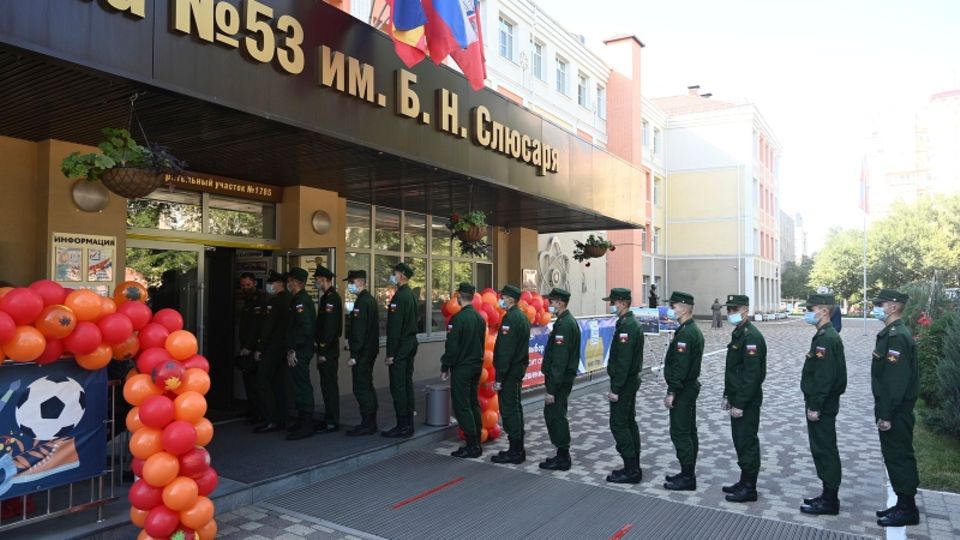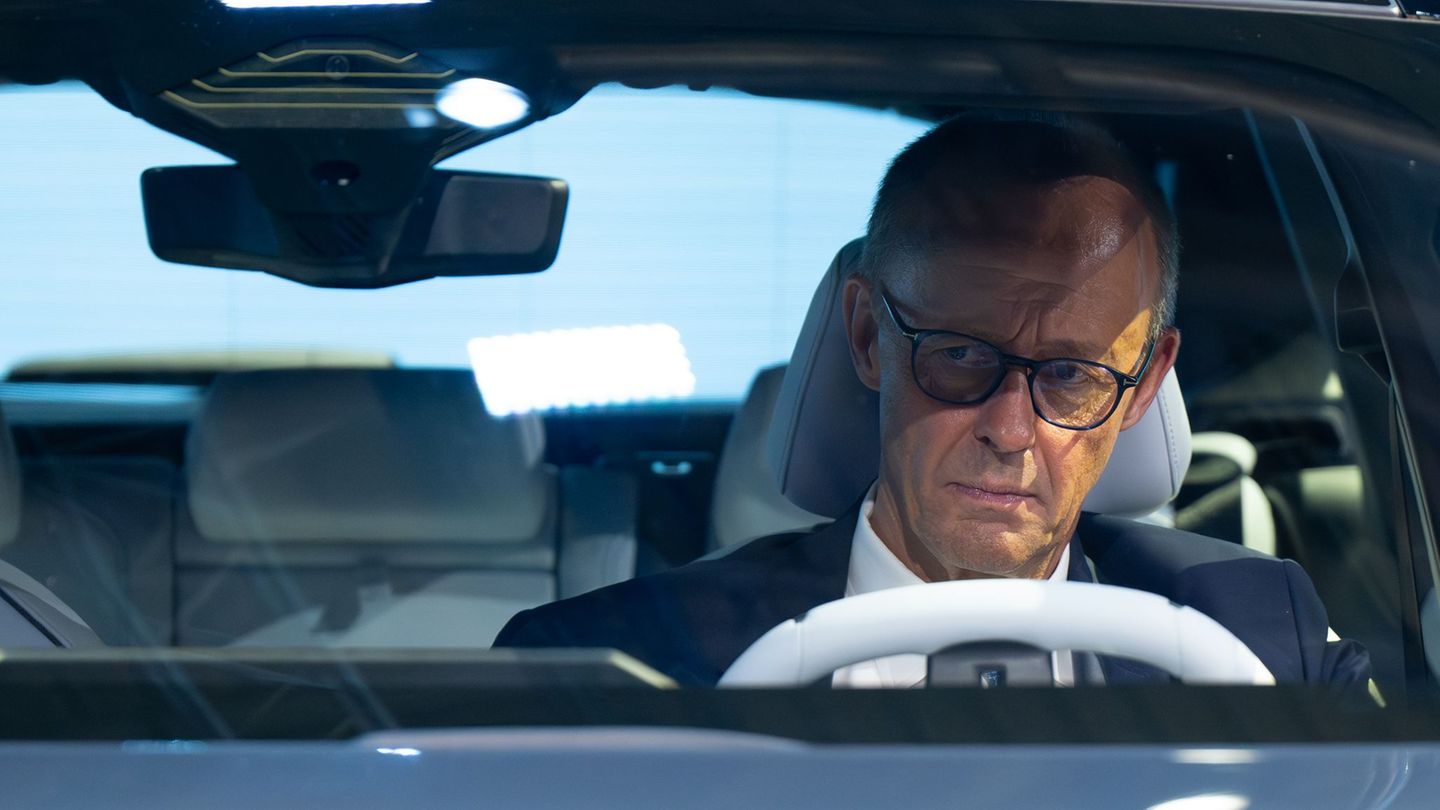Russia has a new parliament. 324 seats out of 450 are occupied by MPs from the Kremlin’s United Russia party. A result of massive forgeries, as a look at the statistics reveals.
“We expected exactly what happened,” said the famous Russian exile and Kremlin critic Mikhail Khodorkovsky, commenting on the outcome of the Duma election. Early on Tuesday morning, the Russian electoral commission again awarded the victory to the party supported by President Vladimir Putin. According to official reports, United Russia received 49.8 percent of the vote and ultimately again won an absolute majority in the State Duma.
Of the total of 450 seats, 324 belonged to the Kremlin party, as the commission announced in the evening. In addition to almost 50 percent of the votes, she also benefited from direct mandates in the distribution of seats. The Communist Party of the Russian Federation (KPRF) landed in second place with 18.9 percent, but it is a loyal partner of United Russia.
What is terrifying about the outcome of this election is that it is so unsurprising. Except perhaps for the last idealists from Alexei Navalny’s team, who still hoped to use the “intelligent election” method to push the United Russia candidates out of parliament, no one in Russia had any doubt that the Kremlin Party will resort to its tried and tested tactics: what does not fit will be made to fit.
And so the Duma election was once again marked by countless manipulations and forgeries. In a preliminary assessment, independent Russian election observers complained of far-reaching violations. She was “forced to determine that the elections can not be recognized as really free,” said the Golos organization. Specifically, the election observers criticized not only inconsistencies in the counting of votes but also the exclusion of numerous opposition candidates.
The observers had already listed thousands of violations in the past few days. Due to restrictions imposed by the Russian authorities, for the first time since 1993, no observers from the Organization for Security and Cooperation in Europe (OSCE) had come to the Duma elections.
Treasonous statistics
But not only the countless videos, photos and audio recordings prove the massive manipulation. A look at the statistics also suggests a massive falsification of the results. The independent election analyst Sergei Schpilkin assumes that, without the forgeries, United Russia would have received just over 30 percent of the vote.
Schpilkin comes to this conclusion on the basis of an analysis of the voter turnout in the individual districts in comparison to the votes cast there for the respective parties. Extremely conspicuous in the published data: The higher the turnout according to the official representation, the more votes went to the account of the ruling party.
If you visualize the data, the statistical outlier becomes obvious. The graph on the left shows the distribution of votes to the respective parties on the Y-axis in relation to the percentage turnout on the X-axis. The dark green line marks the voting shares that were attributable to United Russia.
The graphic clearly shows that from a voter turnout of 40 percent, the voting shares of all parties fall continuously – only in the case of United Russia does the curve rise disproportionately. The shaded area gives an idea of how many voices have an abnormal character and, according to Schpilkin, can only be traced back to a falsification.
Anomalies in Moscow
The curve in the allegedly 95 percent turnout in Moscow is extreme. In the Russian capital, the vote count on Monday led to highly suspicious developments. In particular, the officially announced results of the electronic voting arouse suspicion. This year, the Russians were also able to vote for their candidate for the Duma online. However, the announcement of the results was postponed several times, so that the numbers were only published on Monday lunchtime – after the conventional ballot papers had been evaluated on paper.
Lo and behold: in eight of the 15 Moscow constituencies, where previously opposition candidates had clearly led, United Russia candidates suddenly won. Among them was the propagandist Evgeny Popov. Throughout election night, he was well behind his rival, mathematician Mikhail Lobanov (nominated by the Communist Party of the Russian Federation). After the online results were posted, he suddenly won.
“A black box that nobody controls”
The online voting is “an absolute evil. A black box that nobody controls,” says the analyst Schpilkin. “When it comes to the results of the electronic voting, we are only presented with the results of multiple parties and a single voter turnout number.” The problem: There is no way of knowing where all the votes come from and how the published figures come about.
According to Schpilkin, a total of 14 million voices are abnormal. United Russia was able to credit itself to around 20 percent of the vote through forgeries.
According to the political scientist Dmitrij Oreschkin, these numbers are absolutely credible. “Schpilkin has been practicing his profession for a long time and justifiably interprets the data as an indicator of forgery,” he said in one. “Under normal circumstances, the proportion of votes between the parties would be roughly the same, regardless of how many people voted. […] However, the statistics show us that where there is a high turnout, only United Russia benefits. As if only United Russia voters would vote there. Take Chechnya, for example. The turnout there is over 90 percent, and over 90 percent voted for a united Russia. “The same can be observed in constituencies with military facilities.

The phenomenon is easy to explain. “If you throw ballots somewhere, you automatically have to increase the turnout. Let’s assume that in an electoral district out of 1,000 people voted for United Russia, 300. If the chairman of the electoral commission decides that this is not enough, he goes up Toilet and does not write down 300 votes for United Russia, but adds 500 to them, “explains Oreschkin. The turnout must also be increased by the corresponding number. In the end it says on paper: 1500 people voted, 800 of them for United Russia. “This statistical correlation between voter turnout and increased support for United Russia cannot be observed under normal conditions,” he concluded.
David William is a talented author who has made a name for himself in the world of writing. He is a professional author who writes on a wide range of topics, from general interest to opinion news. David is currently working as a writer at 24 hours worlds where he brings his unique perspective and in-depth research to his articles, making them both informative and engaging.




